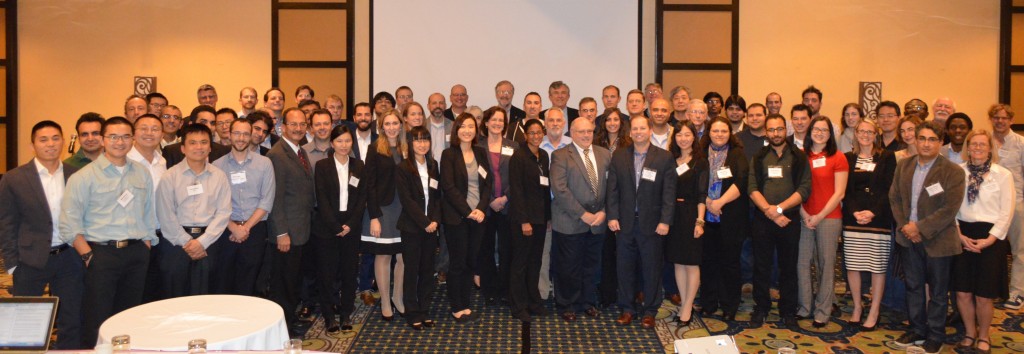As appearing in SOURCE
Photo at left: Moore Medical Center in Oklahoma following the Newcastle-Moore tornado. Photo credit: NIST
Colorado State University has been selected to establish a federal center devoted to helping local governments decide how to best invest resources to lessen the impact of extreme weather and other hazards on buildings and infrastructure — and to recover rapidly in their aftermath.
The new Center for Risk-Based Community Resilience Planning is directed by Engineering professors John W. van de Lindt (principal investigator) and Bruce Ellingwood, who also lead the Engineering team. The Economics team is composed of Department of Economics professors Sammy Zahran, Harvey Cutler, Daniele Tavani, and Martin Shields, as well as 6 economics graduate students. Department of Sociology professor Lori Peek is joined on the Social Sciences team by 2 sociology PhD students.
 The Fort Collins-based center is funded by a $20 million cooperative agreement awarded by the U.S. Department of Commerce’s National Institute of Standards and Technology (NIST). CSU will work with NIST researchers and partners from 10 other universities to develop computer tools to aid in increasing community disaster resilience. This includes preparing for anticipated hazards, adapting to changing conditions, and withstanding and recovering rapidly from disruptions.
The Fort Collins-based center is funded by a $20 million cooperative agreement awarded by the U.S. Department of Commerce’s National Institute of Standards and Technology (NIST). CSU will work with NIST researchers and partners from 10 other universities to develop computer tools to aid in increasing community disaster resilience. This includes preparing for anticipated hazards, adapting to changing conditions, and withstanding and recovering rapidly from disruptions.
“This center complements NIST’s long-standing efforts to improve the performance of the built environment against natural hazards — such as tornadoes, coastal flooding, wildfires and earthquakes — as well as large-scale, human-caused disruptions,” said Acting NIST Director Willie May. “The tools developed by the center will help to further advance the important goal of disaster resilience from ambitious concepts to cost-effective solutions that communities can implement over time.”
A multi-disciplinary team
The award was announced at the NIST Disaster Resilience Workshop in Del Mar, Calif. The center will receive $4 million annually for five years and NIST has the option to renew the award for five additional years, depending on performance and the availability of funds.
“In light of increasingly extreme weather, cities and towns across the country are working to find innovative ways to learn from and prepare for natural disasters,” said U.S. Senator Michael Bennet, D-Colorado. “Colorado State University’s talent and resources have once again allowed them to be a leader in this nationwide initiative to enhance our ability to respond and recover. This impressive work will help local governments more efficiently and cost-effectively prepare for and rebuild after these disasters, and make our communities more resilient.”
The center’s multi-disciplinary team includes experts in engineering, economics, data and computing, and social sciences from Colorado State University, the University of Oklahoma, Rice University, Texas A&M University, the University of Washington, the University of South Alabama, the California Polytechnic University in Pomona and Texas A&M-Kingsville.

“The center will focus on developing tools that individual communities can use to assess their resilience,” van de Lindt explained. “I am extremely honored that CSU has been selected to lead this important work, and look forward to collaborating with colleagues across the nation to help evaluate the effectiveness of alternative measures to minimize post-disaster disruption and recovery time at the local level, in a way that makes the most sense for residents most affected.”
About the center
Work at the new center will support NIST as it drafts its Disaster Resilience Framework. The framework focuses on buildings and infrastructure systems, such as power, communication, water and transportation. It also will address how to maintain social services and institutions vital to meeting the needs of community residents — health care delivery, education, social services, financial institutions — as well as economic functions.
The centerpiece of the center’s effort will be NIST-CORE — the NIST-Community Resilience Modeling Environment. Built on an open-source platform, the computer model and associated software and databases will incorporate a risk-based approach to decision-making that will enable quantitative comparisons of different resilience strategies.
As NIST-CORE is developed, its performance will be tested against data gathered from past disasters. Ultimately, NIST-CORE will be able to learn from one analysis to the next, a capability that does not exist in any other risk or disaster-resilience model in the world.
Rachael Johnson contributed to this story.
